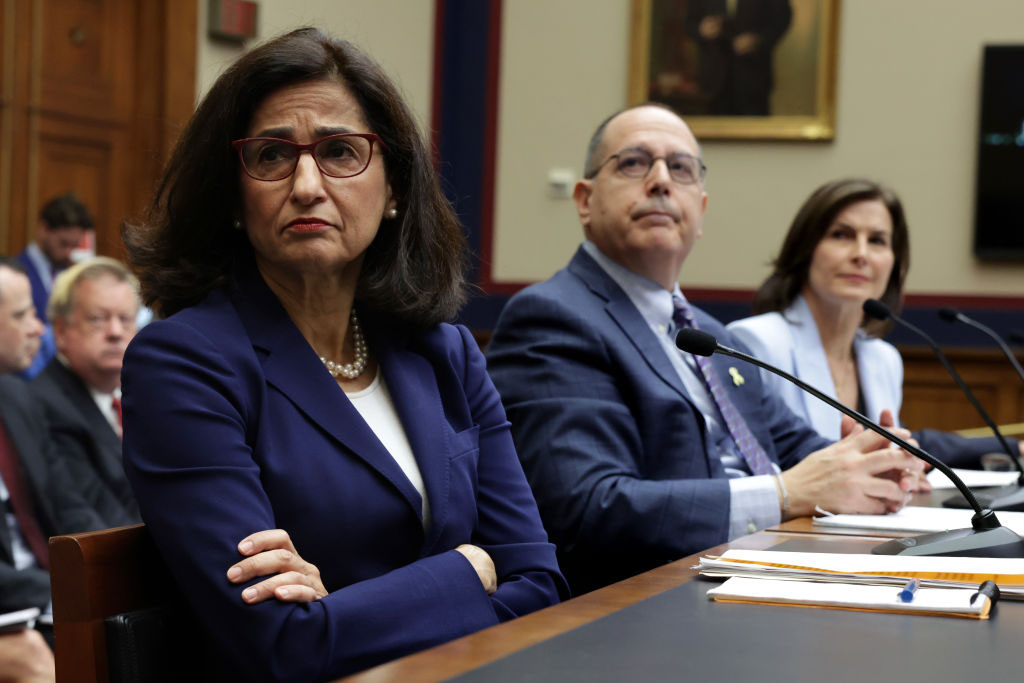As a little girl growing up in New York City, Eleanor Antin went with her mother to see a performance by the world-renowned Ballet Russe de Monte Carlo. “I can still see the dancers in my mind, leaping across the stage,” she said. “I absolutely loved it.”
Years later, as a conceptual and performance artist starting to attract attention for humorous, provocative and boldly feminist works, Antin started experimenting with video equipment as a means of crafting her “most fabulous female self. This was, of course, a ballerina,” she said. “Today, maybe that would be a model, but when I was a kid, ballerinas beat models. To my mind, they still do.”
The influence of Antin’s mother, a Yiddish actress and aficionado of the Russian ballet, plays an important, if indirect, role in “Caught in the Act,” one of Antin’s signature video works to be included in the Getty Center’s “California Video” survey exhibition, March 15-June 8. For Antin’s mother, in addition to putting money aside for dance performances, made sure her daughter received ballet training from Russian teachers.
“She used to give me all sorts of arts classes,” said Antin, who agrees that her mother embodied a certain kind of Jewishness, as she was “infinitely bound up with leftist politics and a passion for high culture and education. She’d take me to ballet class on Saturdays and then afterward we’d go to the museum.”
Created in 1973, “Caught in the Act” juxtaposes a 36-minute video with accompanying still photography and stars Antin as a prima ballerina performing a series of ballet poses for the camera. While the photographs lend the impression that Antin is a trained dancer capable of starring in “The Nutcracker,” the video tells a different story. A talented ballerina, for example, wouldn’t need a pole to help her balance just prior to the 1/125th of a second it takes for the camera to record her while she’s holding her leg in positions like passe or arabesque.
With this work, Antin perfectly “illustrates what the mediums of video and photography can and can’t do,” said Glenn Phillips, senior projects specialist at the Getty Research Institute and curator of the exhibit. “Eleanor was also one of the earliest artists to be using video, so it was important that we include her.”
Consisting of some 50 single-channel videos and 15 installations by 58 artists, the exhibition pays significant attention to the 1970s, when artists like Antin and her poet husband, David Antin, migrated from the East to the West Coast to take up positions in fledgling arts programs.
“I would say there’s a certain humor to the West Coast video of this period, as opposed to video art from New York or Germany, where the work you see is very serious and technical,” Phillips said. “I think that artists like Antin, who came to California, tried things they might not have tried had they remained in a city like New York. They didn’t have the same fear of failure, so they could be more humorous and cocky.”
Speaking by phone from her San Diego studio, Antin, now 73, recalled the early ’70s as an artistic “free-for-all. California suggested this wonderful openness, but while Los Angeles had an arts scene, I was living in San Diego. I was, in a sense, hermetic, but it was a place where I could do all these experiments,” she said.
Born and reared in New York City, Antin first came to San Diego in the summer of 1968, and both she and her husband eventually became professors at UC San Diego. Settling in Southern California also led to the flourishing of her alter egos, such as the King of Solana Beach and Eleanora Antinova, the black ballerina who once danced with the Ballet Russes.
Antin would eventually incorporate video for “narrative purposes,” such as recording the performances of her various personas. “Unlike live performance, I could approximate little movie ways of doing things. But I started using video because it, like photography, had a claim to facticity,” she said. “With ‘Caught in the Act,’ I was interested in the contrast of the moving and the still camera telling two different truths.”
Throughout the decades, Antin has continued to use video, such as in her 1993 architectural installation, “Vilna Nights,” which depicts various inhabitants of a ravaged building in a Jewish ghetto. This particular work also pays more direct homage to the legacy of Antin’s mother, who used to tell her daughter stories about shtetl life “that were nothing like ‘Fiddler on the Roof.'”
When Antin’s mother became ill with Alzheimer’s disease, “it devastated me, and I guess I wanted to make her live as her mind was dying,” Antin said. “The shtetl is part of my Jewish legacy, and every now and then, I’ll say or do something which makes me think, ‘Oh, that’s my shtetl self.”’
Though she hasn’t created any overtly Jewish works in recent years, Antin continues to “feel a strong sense that I’m Jewish. I like feeling Jewish and what that means exactly, well, I don’t worry about that question,” she said. “I was never interested in religion, and I couldn’t tell you when the Jewish holidays are coming, but feeling passionately Jewish has always been one of my pleasures.”
Antin also never seems to stop mining her childhood passions for her own artistic purposes. Her latest work, a series of large-scale photographs that plays with images of Helen of Troy, reflects the artist’s early love for ancient Greco-Roman art and “all those broken, crippled statues I’d see at the Met.”
She’s also working on a “series of conversations between a young Eleanor and Comrade Stalin,” which encompass both text and pen-and-ink drawings. Antin plans to publish the work as a book.
“Stalin and I are walking together in Central Park, and he’s trying to solve all my problems, but really, he’s [screwing] everything up,” she said. “This is definitely related to my mother, to all of her politics and being Jewish.”





















 More news and opinions than at a Shabbat dinner, right in your inbox.
More news and opinions than at a Shabbat dinner, right in your inbox.